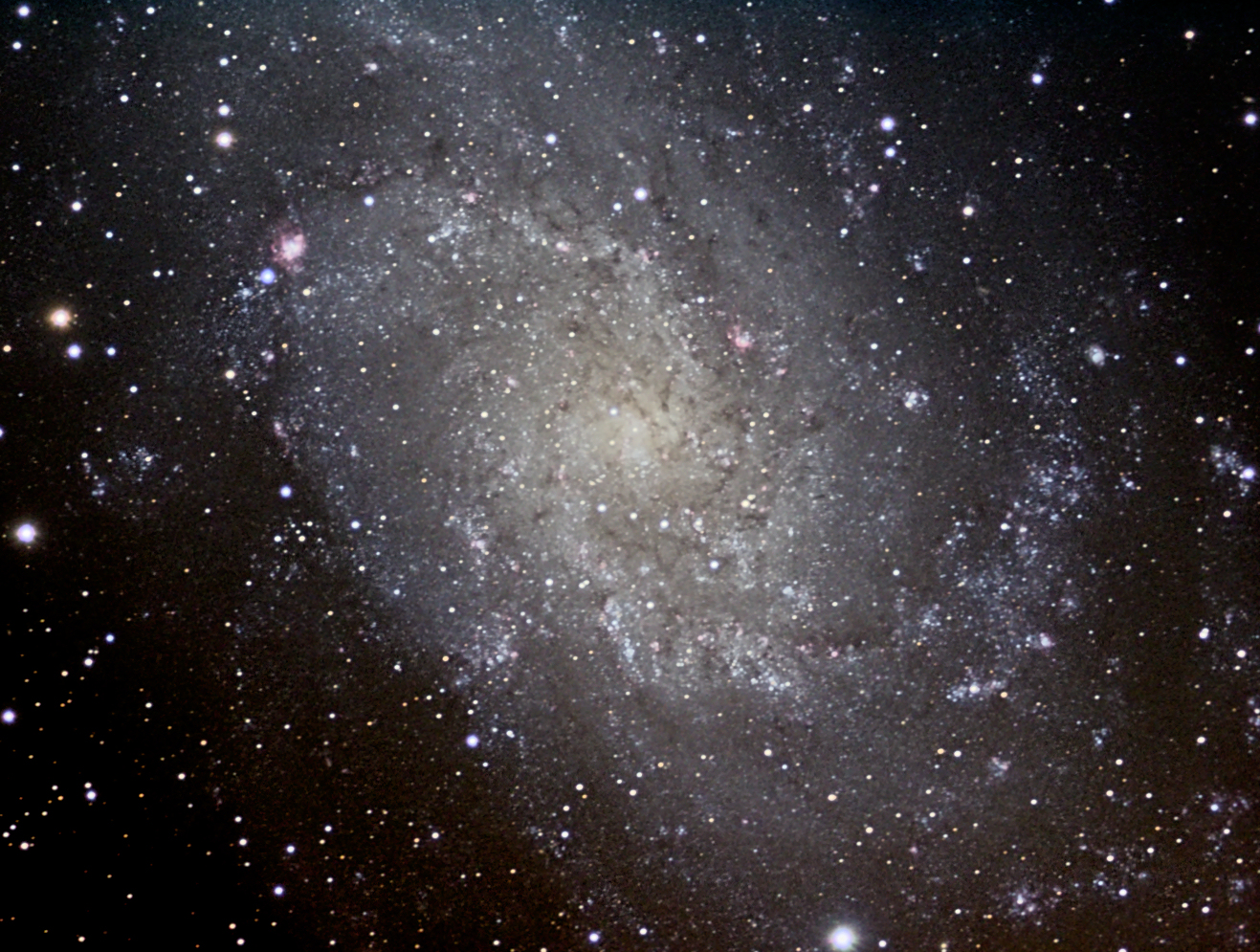M31 M33
The Luminous and Variable Stars in M31 & M33


We present the results of a spectroscopic survey of luminous and variable stars in the nearby spirals M31 and M33. In Paper I we discussed a small group of intermediate temperature supergiants, the warm hypergiants, and suggested that they were likely post-red supergiants. In the second paper we reviewed the spectral characteristics, spectral energy distributions (SEDS), circumstellar ejecta, and mass loss of the LBVs, candidate LBVs, emission line stars, and other luminous and variable stars in M31 and M33. In the third paper of the series we provide a census of confirmed yellow supergiants and candidate dusty red supergiants in M31 and M33, study their mass loss and mass-loss histories, estimate a fraction of stars in a post-RSG state, and place the supergiants on the HR diagram. Paper four in a comprehensive discussion of the spectroscopic characteristics of the different classes of emission lines stars with suggested criteria to separate them. In the last paper in our survey, we present the upper HR diagrams for M31 and M33.
- Paper I - The Warm Hypergiants and Post-Red Supergiant Evolution (Astrophyical Journal, 773, 46, 2013)
- Paper II - Luminous Blue Variables, Candidate LBVs, Fe II Emission Line Stars, and Other Supergiants (Astrophysical Journal, 790, 1, 2014)
- Paper III - Luminous and Variable Stars in M31 and M33. III. The Yellow and Red Supergiants and Post-red Supergiant Evolution (Astrophysical Journal, 825, 1, 2016)
- Paper IV - Luminous and Variable Stars in M31 and M33. IV. Luminous Blue Variables, Candidate LBVs, and the B[e] Supergiants; How to Tell Them Apart (Astrophysical Journal, 836, 64, 2017)
- Paper V - Luminous and Variable Stars in M31 and M33. V. Th Upper HR Diagram (Astrophysical Journal, 844, 40, 2017)
- Related Work - Multi-Epoch BVRI Photometry of Luminous Stars in M31 and M33, John C. Martin and Roberta M. Humphreys (The Astronomical Journal, 154, 3, 2017)
The Warm Hypergiants and Post-Red Supergiant Evolution
The progenitors of Type IIP supernovae have an apparent upper mass limit of about 20 solar masses, suggesting that red supergiants with higher initial masses do not explode as Type IIP SNe. Thus the most luminous red supergiants may evolve to warmer temperatures before their terminal explosions. This leaves us with the problem of where are these post-red supergiants and how do we recognize them? This is an important question for understanding the final stages of massive star evolution.As part of a larger program on the luminous and variable stars in M31 and M33, we have identifieda small subset of stars which we call warm hypergiants which may be post-red supergiants. In this first paper on the M31 and M33 stars, we describe the warm hypergiants and the evidence that they may be examples of post-red supergiants. These stars have A -- F-type supergiant absorption line spectra and strong hydrogen emission, hence the warm hypergiant name. Their spectra are also distinguished by the Ca II triplet and [Ca II] doublet in emission formed in a low density circumstellar environment. They all have significant near and mid-infrared excess radiation due to free-free emission and thermal emission from dust. We estimate the amount of mass they have shed and discuss their wind parameters and mass loss rates which range from a few 10\(^{-6}\) - 10\(^{-4}\) M\(_{\odot}\) yr\(^{-1}\). On an HR Diagram, these stars will overlap the region of the LBVs at maximum light, however the warm hypergiants are not LBVs. Their non-spherical winds are not optically thick and they have not exhibited any significant variability.
Luminous Blue Variables, Candidate LBVs, Fe II Emission Line Stars, and Other Supergiants
In this second paper on M31 and M33, we review the spectral characteristics, spectral energy distributions, circumstellar ejecta, and and evidence for mass loss for 82 luminous and variable stars. We show that many of these stars have circumstellar dust including several of the Fe II emission line stars, but conclude that the confirmed LBVs in M31 and M33 do not have dusty ejecta. The confirmed LBVs have relatively low wind speeds even in their hot, quiescent or visual minimum state compared to the B-type supergiants and Of/WN stars which they spectroscopically resemble. The nature of the Fe II emission line stars and their relation to the LBV state remains uncertain, but many have properties in common with the warm hypergiants and may likewise be post-red supergiants. Several individual stars are discussed in detail. We identify three possible candidate LBVs and three additional post-red supergiant candidates. We suggest that M31-013406.63 (UIT301,B416) is not an LBV/S dor variable, but is a very luminous late O-type supergiant and one of the most luminous stars or pair of stars in M33.
The Yellow and Red Supergiants and Post-Red Supergiant Evolution
Recent supernova and transient surveys have revealed an increasing number of non-terminal stellar eruptions. Though the progenitor class of these eruptions includes the most luminous stars, little is known of the pre-supernova mechanics of massive stars in their most evolved state, thus motivating a census of possible progenitors. From surveys of evolved and unstable luminous star populations in nearby galaxies, we select a sample of yellow and red supergiant candidates in M31 and M33 for review of their spectral characteristics and spectral energy distributions. Since the position of intermediate and late-type supergiants on the color-magnitude diagram can be heavily contaminated by foreground dwarfs, we employ spectral classification and multi-band photometry from optical and near-infrared surveys to confirm membership. Based on spectroscopic evidence for mass loss and the presence of circumstellar dust in their SEDs, we find that 30 - 40% of the yellow supergiants are likely in a post-red supergiant state. Comparison with evolutionary tracks shows that these mass-losing, post-RSGs have initial masses between 20 - 40 M\(_{\odot}\). More than half of the observed red supergiants in M31 and M33 are producing dusty circumstellar ejecta. We also identify two new warm hypergiants in M31, J004621.05+421308.06 and J004051.59+403303.00, both of which are likely in a post-RSG state.
Luminous Blue Variables, Candidate LBVs, and the B[e] Supergiants; How to Tell Them Apart
In this series of papers we have presented the results of a spectroscopic survey of luminous and variable stars in the nearby spirals M31 and M33. In this paper, we present spectroscopy of 132 additional luminous stars, variables, and emission line objects. Most of the stars have emission line spectra, including LBVs and candidate LBVs, Fe II emission line stars and the B[e] supergiants, and the warm hypergiants. Many of these objects are spectroscopically similar and are often confused with each other. With this large spectroscopic data set including various types of emission line stars, we examine their similarities and differences and propose the following criteria that can be used to help distinguish these stars in future work:
1. The B[e] supergiants have emission lines of [O I] and [Fe II] in their spectra. Most of the spectroscopically confirmed sgB[e] stars also have warm circumstellar dust in their SEDs.
2. Confirmed LBVs do not have the [O I] emission lines in their spectra. Some LBVs have[Fe II] emission lines, but not all. Their SEDS shows free-free emission in the near-infrared but no evidence for warm dust. Their most important and defining characteristic is the S Dor-type variability.
3. The warm hypergiants spectroscopically resemble both the LBVs in their eruption or dense wind state and the B[e] supergiants. However, they are very dusty. Some have [Fe II] and [O I] emission in their spectra like the sgB[e] stars, but can be distinguished by their absorption line spectra characteristic of A and F-type supergiants. In contrast, the B[e] supergiant spectra have strong continua and few if any apparent absorption lines.
Candidate LBVs should share the spectral characteristics of the confirmed LBVs with low outflow velocities and the lack of warm circumstellar dust. Based on these criteria, we suggest that the Fe II emission line stars (no [O I], low outflow velocities, and no dust), should be considered LBV candidates.
The Upper HR Diagram
We present HR diagrams for the massive star populations in M31 and M33, including several different types of emission-line stars: the confirmed luminous blue variables (LBVs), candidate LBVs, B[e] supergiants, and the warm hypergiants. We estimate their apparent temperatures and luminosities for comparison with their respective massive star populations and evaluate the possible relationships of these different classes of evolved, massive stars, and their evolutionary state. Several of the LBV candidates lie near the LBV/S Dor instability strip that supports their classification. Most of the B[e] supergiants, however, are less luminous than the LBVs. Many are very dusty with the infrared flux contributing one-third or more to their total flux. They are also relatively isolated from other luminous OB stars. Overall, their spatial distribution suggests a more evolved state. Some may be post-RSGs (red supergiants) like the warm hypergiants, and there may be more than one path to becoming a B[e] star. There are sufficient differences in the spectra, luminosities, spatial distribution, and the presence or lack of dust between the LBVs and B[e] supergiants to conclude that one group does not evolve into the other.
Multi-Epoch BVRI Photometry of Luminous Stars in M31 and M33
We present the first four years of BVRI photometry from an on-going survey to annually monitor the photometric behavior of evolved luminous stars in M31 and M33. Photometry was measured for 199 stars at multiple epochs, including 9 classic Luminous Blue Variables (LBVs), 22 LBV candidates, 10 post-RGB A/F type hypergiants, and 18 B[e] supergiants. At all epochs the brightness is measured in V and at least one other band to a precision of 0.04 — 0.10 magnitudes down to a limiting magnitude of 19.0 — 19.5. Thirty three (33) stars in our survey exhibit significant variability, including at least two classic LBVs caught in S Doradus type outbursts. A hyper-linked version of the photometry catalog is at: http://go.uis.edu/m31m33photcat/.
Data from the series
Spectra from Papers I, II, and IV are available at the following pages:
- M31 - Stellar spectra
- M33 - Stellar spectra
Indexed and searchable spectra from Paper III are available at the following pages:
- M31 - YSG Spectra
- M33 - YSG Spectra
- MW - Foreground Dwarf/Subgiant Spectra
Photometry and lightcurves from Paper IV are available here:
- M31/M33 - Photometry/Lightcurves* - John C. Martin
* Catalog will be updated as new data becomes available.
[UMN Archive]
